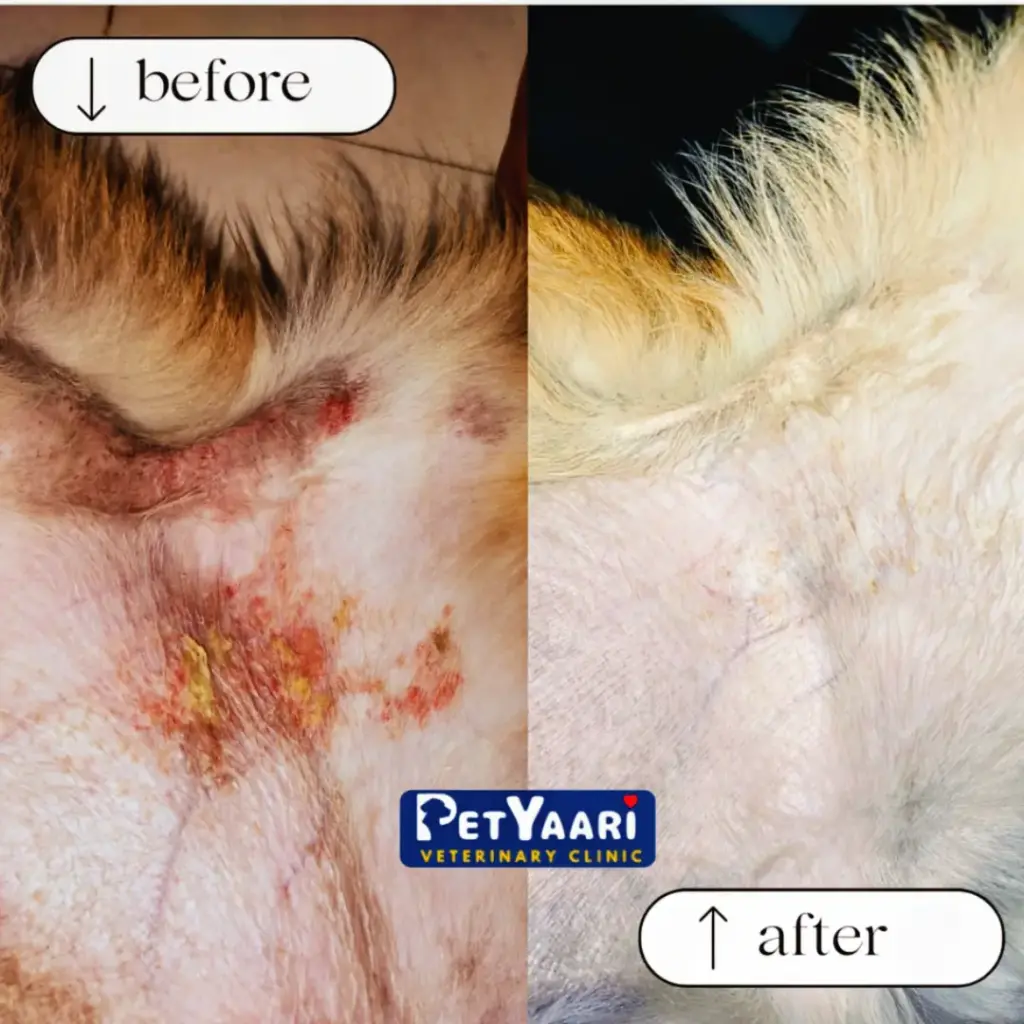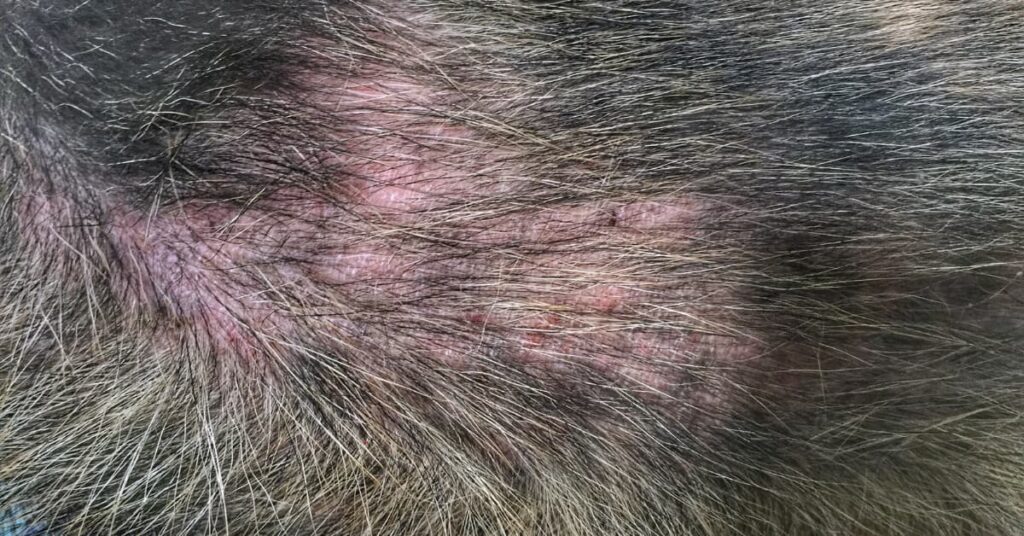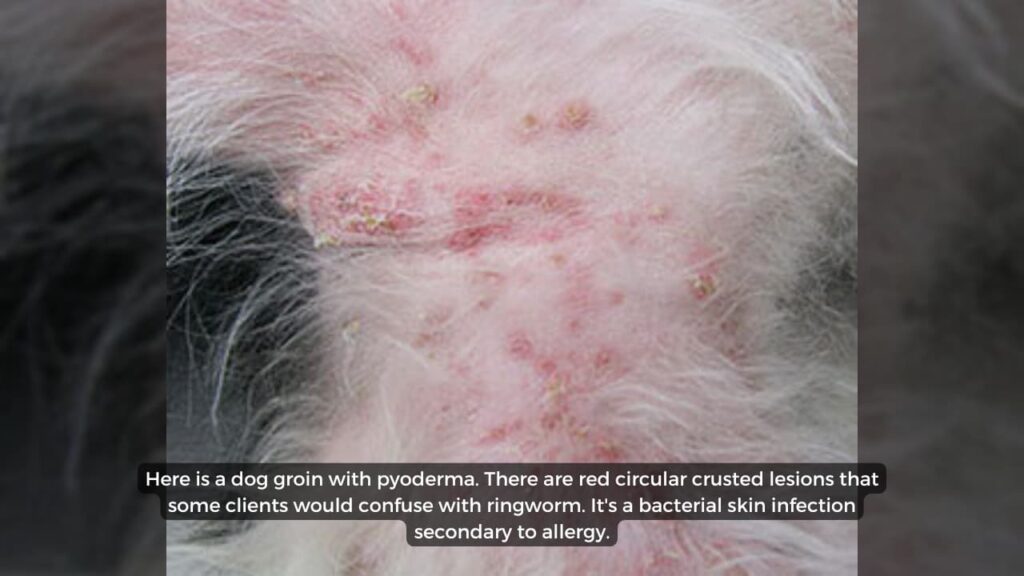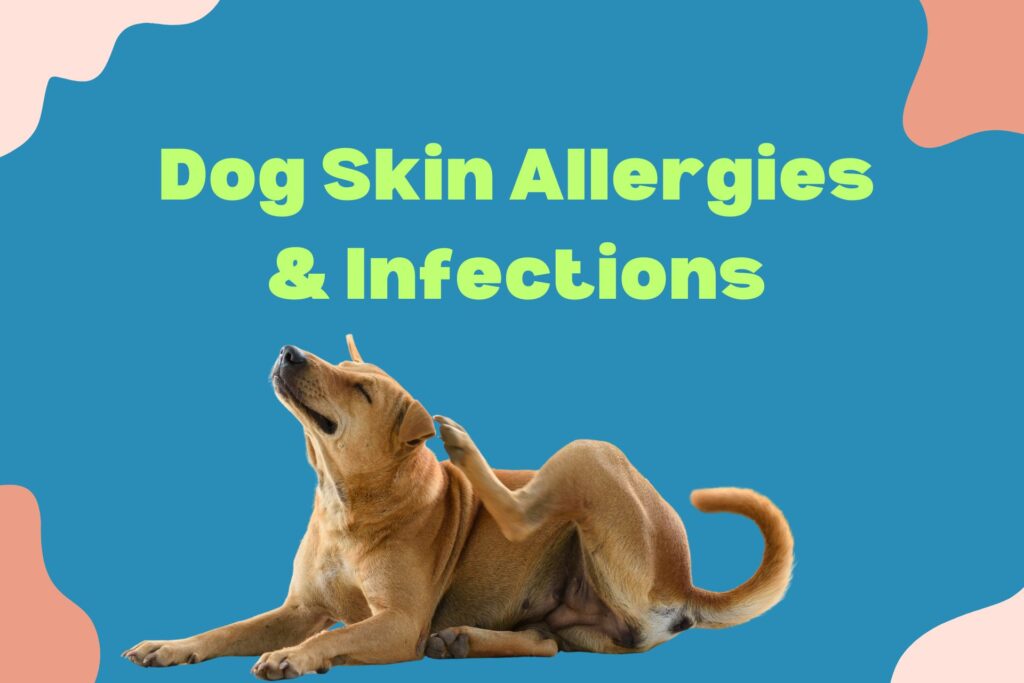Is your dog constantly scratching, losing fur, or suffering from red, irritated skin? You’re not alone, over 35% of dogs face skin allergies or infections in india. they often point to underlying skin allergies or infections that require professional care to resolve. Left untreated, they can significantly impact your dog’s quality of life and lead to more severe health issues.

At Petyaari Pet Clinic, we understand your concern. This guide will help you recognize the signs of common skin problems, understand their causes, and learn about the effective treatment and prevention strategies we offer.
Part 1: Understanding Dog Skin Allergies
A skin allergy, or allergic dermatitis, occurs when your dog’s immune system overreacts to a substance (an allergen). This overreaction is what causes the intense itchiness and inflammation.

Types of Common Skin Allergies:
- Flea Allergy Dermatitis (FAD): This is the most common skin allergy in dogs, caused by a reaction to flea saliva. For a sensitive dog, a single flea bite can trigger a cycle of severe itching, redness, and hot spots (raw, inflamed areas of skin).
- Atopic Dermatitis (Environmental Allergies): This hereditary condition is a reaction to inhaled or contact allergens like pollen, dust mites, or mold. It often affects the paws, ears, snout, and underside, causing chronic itchiness and predisposing the skin to secondary infections.
- Food Allergies: A reaction to a specific protein in your dog’s food, such as beef, chicken, or dairy, can manifest as itchy skin, hives, and recurrent ear or skin infections. This is different from a food sensitivity, which primarily causes digestive upset.
- Contact Allergies: The rarest type, this allergy occurs when your dog’s skin reacts to direct contact with an irritant, such as certain fabrics, cleaning products, or plants. The reaction, typically redness and itching, is localized to the point of contact.
Part 2: Understanding Dog Skin Infections
Skin infections often develop as a result of an allergy or another underlying issue that has compromised the skin’s natural defenses.

Types of Common Skin Infections:
- Bacterial Infections (Pyoderma): Often caused by Staphylococcus, these infections can appear as red bumps, pustules (pimples), crusts, and hair loss. They can be superficial or deep, depending on the layers of skin affected.
- Fungal Infections:
- Yeast Dermatitis: An overgrowth of the Malassezia yeast (normally present on the skin) leads to greasy, smelly, and thickened skin with intense itching, especially in skin folds, ears, and paws.
- Ringworm: This is a contagious fungus (not a worm) that causes circular patches of hair loss, scaling, and crusting. It is zoonotic, meaning it can spread from pets to people.
- Parasitic Infections: External parasites are a major cause of skin disease.
- Mange: Caused by microscopic mites, there are two main types. Sarcoptic mange is intensely itchy and highly contagious, while Demodectic mange is less itchy and more common in puppies or dogs with weakened immunity.
- Fleas and Ticks: Bites from these parasites cause irritation and can lead to secondary infections from scratching.
- Hot Spots (Acute Moist Dermatitis): These are painful, raw, and rapidly spreading sores that arise when a dog’s excessive licking or chewing (often due to an underlying allergy or flea bite) introduces bacteria into damaged skin.
Here’s what to watch for:
| Infection Type | Cause | Symptoms | Treatment |
|---|---|---|---|
| Bacterial (Pyoderma) | Bacteria like Staphylococcus | Red bumps, pustules, hair loss | Antibiotics, medicated shampoos |
| Yeast Dermatitis | Malassezia yeast overgrowth | Greasy, smelly skin, itching | Antifungal treatments |
| Ringworm | Contagious fungus | Circular hair loss, scaling | Antifungal medication |
| Mange | Microscopic mites | Itching, hair loss | Medicated dips, oral drugs |
| Hot Spots | Bacteria from licking/chewing | Painful, raw sores | Antibiotics, anti-itch meds |
Got questions about your dog’s skin? Book personalised consultation with Petyaari Pet Clinic.
Part 3: Symptoms to Watch For
If you notice any of the following signs, it’s time to consider a veterinary consultation:
- Constant itching, scratching, licking, or chewing
- Red, inflamed skin, rashes, or hives
- Scabs, crusts, or pustules
- Hair loss or bald patches
- Greasy or flaky skin with a foul odor
- Recurrent ear infections
- Gastrointestinal issues like vomiting or diarrhea (often linked to food allergies)
Part 4: Diagnosis at Petyaari Pet Clinic
A correct diagnosis is the first step toward providing your dog with relief. At Petyaari Pet Clinic, our diagnostic process is thorough and designed to identify the precise cause of your pet’s discomfort. This includes:
- A Detailed History: We’ll discuss your dog’s symptoms, diet, environment, and lifestyle to identify potential triggers.
- Physical Examination: Our veterinarians will perform a comprehensive nose-to-tail examination of your dog’s skin, coat, and ears.
- Diagnostic Testing: Depending on our initial findings, we may recommend:
- Skin Cytology or Scrapings: To check for bacteria, yeast, or mites under a microscope.
- Fungal Cultures: To diagnose ringworm.
- Allergy Testing (Blood or Skin Tests): To identify specific environmental allergens.
- Food Elimination Trial: The gold standard for diagnosing food allergies, which our team can guide you through.
- Biopsy: In complex cases, a small skin sample may be analyzed for a definitive diagnosis.
Part 5: Comprehensive Treatment Options
Once a diagnosis is made, we will create a personalized treatment plan. Our goal is to manage the immediate discomfort and address the root cause to prevent recurrence.
- Allergen Control & Medications: This may include antihistamines, corticosteroids, or other advanced medications to control itching and inflammation. For environmental allergies, immunotherapy (allergy shots) may be recommended for long-term relief.
- Topical Treatments: Medicated shampoos, sprays, and ointments are essential for treating infections and soothing inflamed skin.
- Parasite Control: A strict, year-round flea and tick prevention plan is crucial, especially for dogs with FAD. We can recommend the safest and most effective products for your pet.
- Dietary Management: For food allergies, our team will help you navigate a diet change. We can recommend specialized hypoallergenic or prescription diets formulated to support skin health and eliminate trigger ingredients.
Client Testimonial: “Petyaari Pet Clinic transformed my dog’s life! My pet name is Lexie. I got Very caring treatment from this clinic. Felt happy My pet is recovered her body infection and doctor in this strictly asks for follow-ups which are very crucial in treatment procedure so with the help of the doctor my pet is back to normal and I’m happy” – Rishikesh, Hyderabad.
Part 6: Prevention is Key
Maintaining your dog’s skin health involves a proactive approach:
- Regular Grooming: Brushing removes loose hair and debris, while routine bathing with a vet-approved shampoo keeps the skin clean.
- Consistent Parasite Prevention: Stick to a monthly flea and tick schedule.
- A Balanced Diet: High-quality food rich in omega fatty acids supports a strong skin barrier.
- Clean Environment: Regularly wash your dog’s bedding and use pet-friendly cleaning products to minimize environmental irritants.
Breeds Prone to Skin Issues
Some breeds are more susceptible to skin problems:
- Wrinkled Breeds (e.g., Bulldogs, Pugs): Prone to bacterial and yeast infections in skin folds.
- Long-Haired Breeds (e.g., Golden Retrievers): Trap moisture, leading to infections.
- Allergy-Prone Breeds (e.g., Labradors, Terriers): More likely to develop atopic dermatitis.
Your Partner in Your Pet’s Health
You don’t have to manage your dog’s skin health alone. These conditions can be complex, but relief is possible. The dedicated team at Petyaari Pet Clinic is here to provide expert diagnosis, personalized treatment, and compassionate care.
Book a consultation today, and let’s take the first step toward making your beloved pet comfortable, healthy, and happy again.

Great read! You’ve covered both skin allergies and infections, so clearly the tips on proper cleaning, diet tweaks, and vet guidance feel super practical and trustworthy.
Thankyou For Your Valuable Feedback